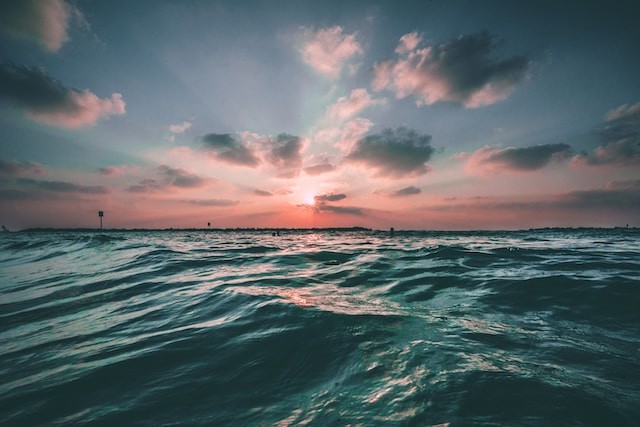Iron is a vital nutrient for life, but it is scarce in many parts of the ocean. A new study reveals how mineral forms of iron influence the cycling of this element in the marine environment and its implications for climate change.
Importance of Iron in ocean

Iron is a trace element that is essential for photosynthesis, the process by which plants and algae convert light and carbon dioxide into organic matter and oxygen, as per Phys.org.
The Southern Ocean, the equatorial Pacific, and the subarctic Pacific are particularly affected by iron's high insolubility in seawater, which can frequently be the limiting factor for phytoplankton development in vast parts of the ocean.
These regions are known as high-nutrient, low-chlorophyll (HNLC) zones, because they have high concentrations of other nutrients, such as nitrogen and phosphorus, but low levels of chlorophyll, a pigment that indicates phytoplankton biomass.
The amount and availability of iron in the ocean depend on various physical, chemical and biological processes that affect its solubility, transport and recycling.
Mineral iron affects ocean iron cycle
Mineral iron refers to iron that is present in solid forms, such as oxides, hydroxides and sulfides. These forms can be either dissolved or particulate, depending on their size and aggregation state.
Dissolved iron is typically defined as iron that passes through a 0.2-micron filter, while particulate iron is retained by the filter.
Free iron is defined as iron that is not bound to any organic or inorganic molecules. Complexed iron is defined as iron that is bound to molecules known as ligands that increase its solubility.
Previous studies have assumed that ligands are the main factor that controls the solubility and distribution of iron in the ocean.
A recent study headed by scientists from the University of Liverpool and published in the journal Nature challenges this notion and demonstrates that iron in crystalline forms is crucial for controlling the ocean iron cycle.
The study was based on an extensive field campaign in the Atlantic Ocean, where the researchers collected over 2,000 samples of seawater and measured various parameters related to iron chemistry and biology.
The researchers found that mineral forms of iron were largely independent of ligands in the upper ocean and instead controlled by the aggregation of iron oxide colloids to form larger particles that sink out of the surface layer.
This process, called the colloidal shunt, was responsible for removing about 40% of iron from the upper ocean, much more than previously thought.
The researchers also found that mineral forms of iron were important for supplying iron to phytoplankton through dissolution and recycling.
They estimated that about 70% of phytoplankton iron demand was met by mineral forms of iron, compared to only 30% by complexed iron.
Implications for ocean ecosystems and climate
The study provides a new perspective on how mineral forms of iron influence the cycling of this nutrient in the ocean and its availability for phytoplankton, as per Mongabay.
The findings have implications for understanding how changes in climate and human activities may affect ocean productivity and carbon sequestration.
The balance between the mineral forms of iron and ligands, for instance, may shift due to variations in dust deposition, ocean circulation, oxygen levels, and pH, which may impact the solubility and removal of iron from the upper ocean.
This may have consequences for phytoplankton growth and diversity, as well as for higher trophic levels that depend on them.
The study suggests that mineral forms of iron may enhance carbon export by co-aggregating with organic matter and sinking faster than individual particles.
The study also opens new avenues for research on the relationship between mineral forms of iron and other biogeochemical cycles, such as nitrogen, sulfur and phosphorus.
Related Article: Microbes: Source of Huge Iron-Ore Deposits
© 2025 NatureWorldNews.com All rights reserved. Do not reproduce without permission.





